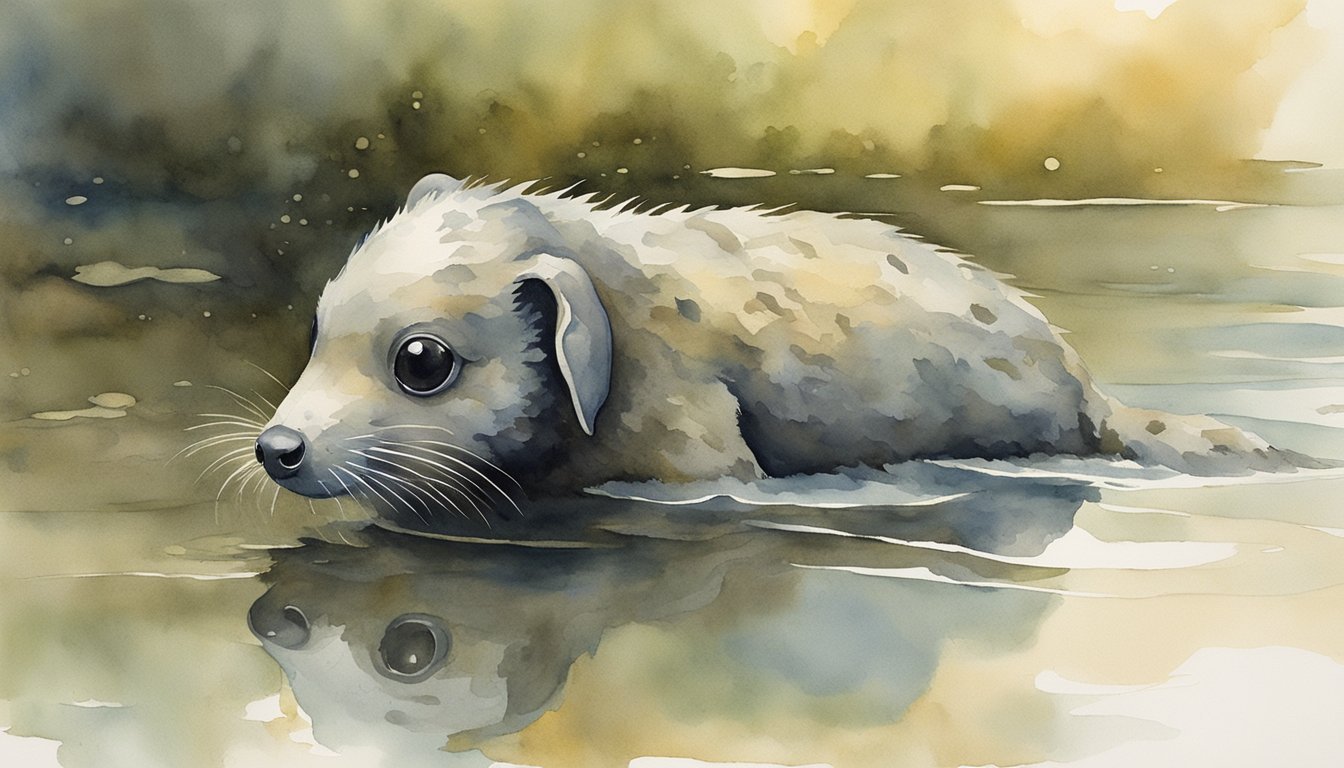Mudpuppy Basics

The mudpuppy, also known as Necturus maculosus, is an intriguing amphibian of North America, notable for retaining juvenile features into adulthood. Its unique taxonomic classification and physical traits make it a subject of curiosity among the many species within the amphibian realm.
Taxonomy and Identification
The mudpuppy belongs to the family Proteidae, which encompasses aquatic salamanders. Scientifically termed Necturus maculosus, this species is part of the genus Necturus. Identifying a mudpuppy can be done by observing its persistent external gills, which are feathery and red, and its robust, elongated body that exhibits blue-black spots across a brown, gray, or black base color.
Physical Characteristics
Mudpuppies possess a distinctly flat head, wide tail, and short limbs accentuating an overall flattened body. Their four toes on each foot aid them in navigating their aquatic surroundings. The skin of a mudpuppy is smooth to touch and is devoid of scales. Coloration varies widely among these creatures, ranging from rusty brown to a darker gray or black, marked consistently with blue-black spots.
Habitat and Distribution
These entirely aquatic salamanders are found in parts of North America—a fact that speaks to their adaptability and presence across various water bodies. Mudpuppies thrive in lakes, rivers, and ponds, and their distribution is widespread across these aquatic environments. Their gilled lifestyle necessitates a habitat that is both fresh and adequately oxygenated to facilitate their unique respiratory process.
Through their distinct taxonomy, physical characteristics, and specific habitat requirements, mudpuppies serve as an extraordinary example of the diversity and specialization found within aquatic amphibians.
How Can Proper Care Practices for Iguanas Be Applied to Ensure the Health of a Mud Puppy?
Ensuring the health of a mud puppy involves adopting various care practices that resonate with iguana health tips. Maintaining optimal water conditions, providing a balanced diet, and ensuring proper temperature are crucial. Just as iguanas thrive on specific care, mud puppies benefit from attentive habitat management and nutritional oversight for their overall well-being.
Mudpuppy Ecology and Conservation

The mudpuppy is an intriguing amphibian whose unique life cycle and environmental needs are critical for its survival. Their conservation is essential, given that they serve as indicators of ecological health.
Life Cycle and Reproduction
Mudpuppies, being vertebrates, exhibit a fascinating reproductive process. Females lay their eggs in concealed locations underwater, often attaching them to the undersides of rocks or debris. Males deposit sperm which then externally fertilize the eggs. These amphibians are known for their paedomorphic features, which means they reach sexual maturity while retaining traits typically seen in larvae, such as external gills.
Diet and Predation
The diet of the mudpuppy mainly consists of small aquatic animals, including fish, crayfish, worms, and mollusks. They are adept at hunting their prey in the low-light conditions of their aquatic habitats. While they are predators, mudpuppies also have to be wary of their own. Birds such as herons and various reptiles can pose a threat, especially to younger or smaller individuals.
Threats and Conservation Efforts
Mudpuppies face several environmental threats, with pollution and siltation being chief among them. These factors can degrade their habitats, affecting water quality and temperature, which in turn can impact their ability to breathe as they rely on both lungs and skin for respiration. Fortunately, mudpuppies are currently listed as of Least Concern regarding their conservation status, but ongoing research and monitoring are crucial to ensure that they do not hide in dwindling numbers. Conservationists strive to understand and mitigate the impacts of human activity on mudpuppy habitats.

